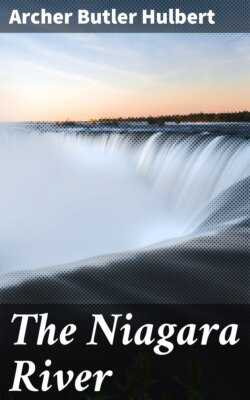Читать книгу The Niagara River - Archer Butler Hulbert - Страница 18
На сайте Литреса книга снята с продажи.
Horseshoe Falls from Below.
ОглавлениеRemembering always that the actual pitch is four octaves lower, here are the notes which form this matchless diapason:
Mrs. Van Rensselaer tells us there is yet another music at Niagara that must be listened for only on quiet nights. It is like the music of an orchestra so very far away that its notes are attenuated to an incredible delicacy and are intermittently perceived, as though wafted to us on variable zephyrs.
It is the most subtle, the most mysterious music in the world. What is its origin? Such fairy-like sounds are not to be explained. Their appeal is to the imagination only. They are so faint, so far away, that they almost escape the ear, as the lunar bow and the fluted tints of the American Fall almost escape the eye. And yet we need not fear to lose them, for they are as real as the deep bass of the cataracts.
Whether it be the resounding waterfall producing this wondrous harmony of the floods, or the most charming choral of the Rapids, the music of Niagara on the mind properly adjusted and attuned must create a most profound impression of repose. The exception to this rule, most terrible to contemplate, is certainly to be found in the cases of the unfortunates whose minds are so distraught or unbalanced that this same call of the waters acts like poison and lures them to death.
I still think [wrote Mr. Howells in his most delightful sketch, Niagara, First and Last] that, above and below the Falls, the Rapids are the most striking features of the spectacle. At least you may say something about them, compare them to something; when you come to the cataract itself you can say nothing; it is incomparable. My sense of it first, and my sense of it last, was not a sense of the stupendous, but a sense of beauty, of serenity, of repose.
In her beautiful description, given elsewhere in our story, Margaret Fuller explains the effect of the Rapids by moonlight on the heart of one who, during the day, had passed through the familiar throb of disappointment in the great spectacle at Niagara.
Now I take it one must see in Niagara this element of repose or find in it something less than was hoped for. To one who expects an ocean pouring from the moon, a rush of wind and foam like that to be met with only in the Cave of the Winds, there is bound to come that common feeling that the fact is not equal to the picture imagination had previously created. Take the Whirlpool; seen from the heights above, it
has that effect of sculpturesque repose [writes Mr. Howells], which I have always found the finest thing in the Cataract itself. From the top the circling lines of the Whirlpool seemed graven in a level of chalcedony. . . . I have no impression to impart except this sense of its worthy unity with the Cataract in what I may call its highest æsthetic quality, its repose.[8]
